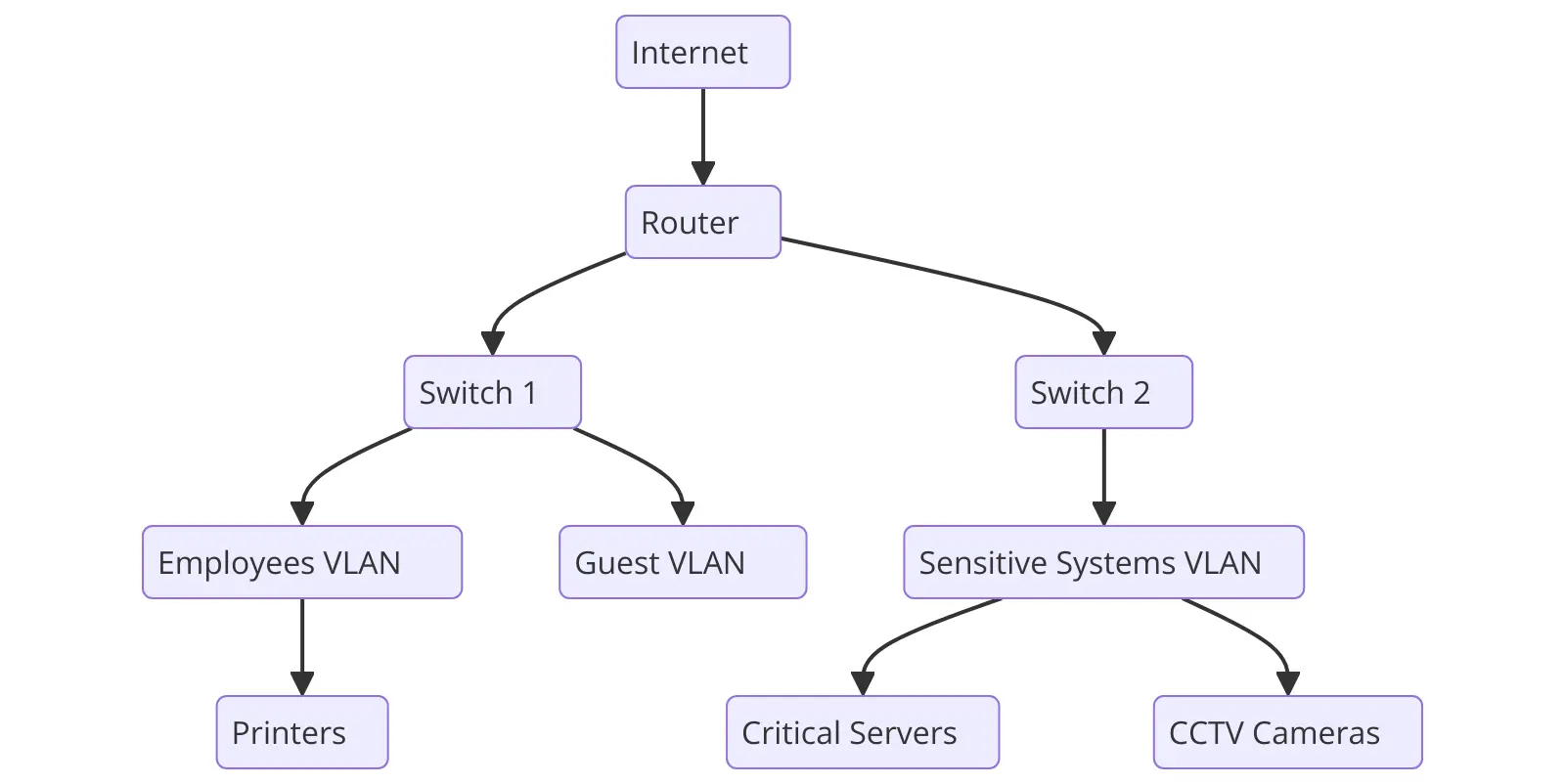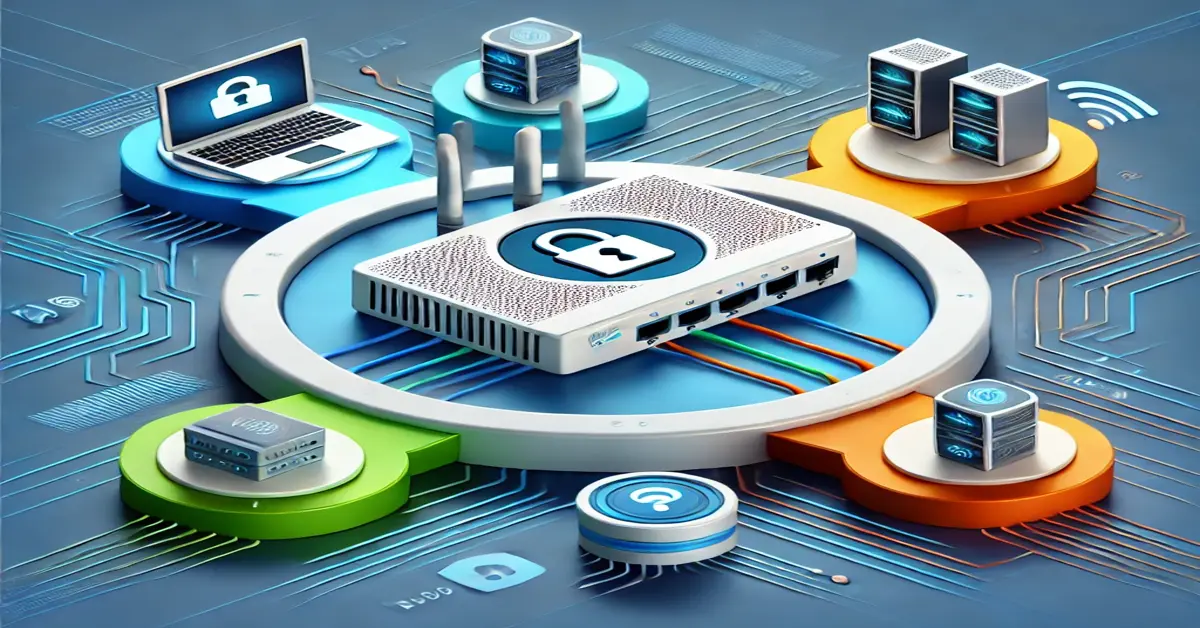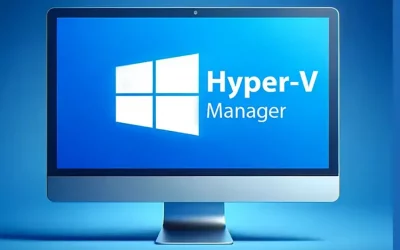Picture a crowded office where everyone has access to everything: your sensitive files, your video conferences, even your network’s critical infrastructure. It sounds chaotic, right? That’s where VLAN segmentation steps in. It’s like creating separate rooms in your digital workspace, each with its own purpose and level of access.
Now, imagine how much smoother your day would be with a well-segmented network. Employees access only what they need, guests stay in their lane, and critical systems remain untouchable. It’s not just about organization—it’s about peace of mind.
What is VLAN Segmentation?
Virtual Local Area Networks (VLANs) allow you to divide a single physical network into multiple virtual networks. Each VLAN acts as its own distinct segment, enhancing security, improving performance, and simplifying management.
Think of it as having different floors in a building: one for HR, another for IT, and another for guests. Everyone gets their own space, reducing clutter and potential conflicts.
⭐ Top 5 Benefits of VLAN Segmentation
1. Enhanced Security
VLANs act like digital firewalls. By isolating sensitive systems and data, you significantly reduce the risk of unauthorized access and lateral threats.
- Limit access to sensitive data by restricting it to specific VLANs.
- Contain threats within a segment, preventing lateral spread.
Example: In a hospital, patient records are separated from public Wi-Fi to keep sensitive data safe.
2. Improved Network Performance
VLANs help reduce congestion by separating traffic into manageable streams.
- Isolate bandwidth-heavy applications (e.g., video, VoIP) to improve performance.
- Segment guest traffic from internal systems.
Example: In retail, customer transactions and security systems operate on different VLANs—avoiding network clashes.
3. Simplified Management
With VLANs, you manage networks logically instead of physically.
- Group devices by department or function rather than physical location.
- Apply consistent network policies based on VLAN roles.
Example: IT admins can push updates to all “finance VLAN” devices from a single pane.
4. Cost Savings
No need to invest in multiple switches or build separate physical networks.
- Leverage existing hardware for virtual segmentation.
- Lower your long-term operational and maintenance expenses.
Ideal for: Startups and SMBs that need secure, scalable networks on a budget.
5. Better Compliance
Compliance standards often demand isolation of sensitive data.
- Meet HIPAA, PCI DSS, and GDPR requirements.
- Simplify audits with clear traffic separation.
Case Studies: VLANs in Action
- Healthcare: Patient devices, medical records, and guest Wi-Fi are each isolated for compliance and safety.
- Education: Students, teachers, and admin staff are assigned to different VLANs to control access.
- Retail: POS systems, back-office computers, and public Wi-Fi run separately to prevent data leakage.
How to Implement VLAN Segmentation
- Identify devices by function or department (e.g., Finance, Guest, VoIP).
- Configure VLANs on a managed switch (Cisco, Ubiquiti, etc.).
- Assign ports or MAC addresses to the appropriate VLANs.
- Test traffic isolation and connectivity before going live.
⭐ Visual Guides and Resources
- Network Topology Diagram: Example of VLAN layout in an enterprise network.

- Configuration Steps: Ubiquiti interface screenshots showing VLAN setup.
- Comparison Table: VLANs vs. Non-VLAN networks:
Category VLAN Networks Non-VLAN Networks Security 🔒 Isolated traffic for enhanced security (✔️) Shared traffic with minimal isolation (❌) Performance 🚀 Optimized performance through segmentation (✔️) Performance degradation due to congestion (❌) Cost 💲 Cost-effective using fewer devices (✔️) Requires more hardware (❌) Scalability 🌐 Easily scalable with VLAN configurations (✔️) Manual expansion with new hardware (❌)
References
The Bottom Line
In today’s fast-paced, security-sensitive world, VLAN segmentation is no longer optional. It enhances security, improves speed, simplifies IT operations, and ensures regulatory compliance—all without breaking your budget.
Whether you’re a small business owner or an enterprise IT pro, VLANs offer a flexible, scalable way to future-proof your network.
Ready to level up? Start planning your VLAN strategy today—and say goodbye to network chaos for good.
Frequently Asked Questions
What is VLAN segmentation?
VLAN segmentation is the process of dividing a physical network into multiple logical networks. Each VLAN operates independently, enhancing security and performance.
How does VLAN improve network security?
VLANs isolate traffic between departments or device groups, minimizing exposure to unauthorized users and containing threats within specific segments.
Do I need special equipment to implement VLANs?
You’ll need a VLAN-capable managed switch or router. Most modern enterprise switches from brands like Cisco or Ubiquiti support VLAN configuration.
Can VLANs help with regulatory compliance?
Yes, VLANs help organizations meet compliance standards such as HIPAA, PCI DSS, and GDPR by isolating sensitive data and enforcing access control policies.
Are VLANs only for large networks?
No. VLANs are beneficial for networks of all sizes. Even small businesses can enhance their network security and organization using VLANs.







